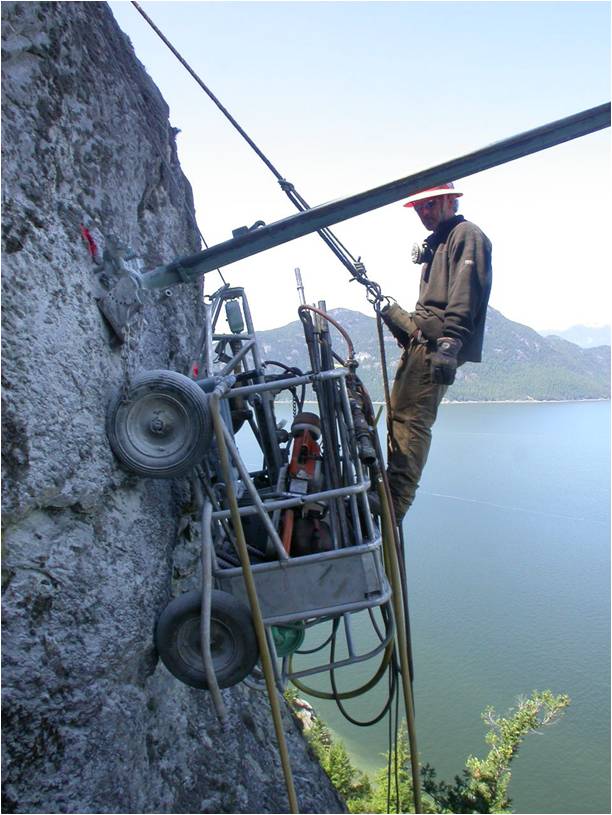
B.C.’s mountains offer spectacular scenery, but they can also make building and maintaining our roads a lot more challenging. One of the reasons for this is rock fall. Rock fall occurs naturally and has many causes, including water pressure, ice jacking, tree roots growing in cracks, erosion and even animal activity. And while rock fall can occur any time, we generally see an increase between February and April when we get lots of rain and frequent cycles of freezing and thawing.
To minimize the dangers of falling rock, we have a dedicated stabilization program that manages more than 22,000 different slopes along 42,000 km of road. That’s a lot of ground to cover and a whole lot of rock to keep track of!
The stabilization program provides on-going maintenance to rock slopes and uses a variety of techniques to improve safety. Common techniques include:
- Rock Scaling – workers hang suspended by ropes and move loose rock with pry bars.
- Rock Bolting – tensioned steel bars to stabilize the rock face.
- Slope Mesh – wire mesh is draped over the slope to direct falling rocks into highway ditches.
- Trim Blasting – holes are drilled and explosives placed into the rock to remove a specific section.
- Shotcrete – a special concrete is used to reinforce the rock and increase stability.
- Horizontal Drains – holes are drilled and lined with drain pipe to relieve water pressure in slopes.
- Rockfall Fences – special fences designed to be flexible and absorb the energy of falling rock.
It’s a big job, and one we need to keep up continually. It’s just one of the many things we do to keep motorists safe & moving.
Join the discussion